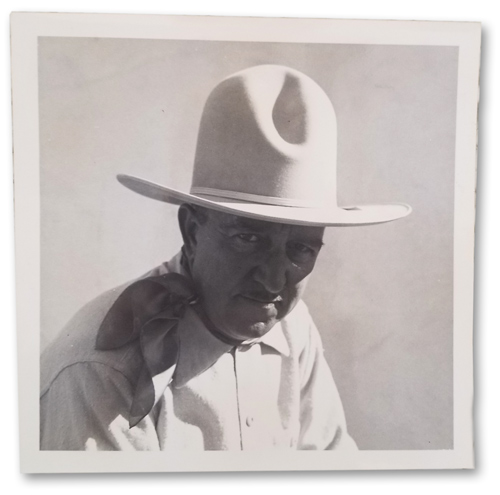Born at Tonopah, Nevada, 1891.
Father, John MacRae, was one of the early settlers in that mining country, having gone West directly after the Civil War with his father. John MacRae was Deputy Sheriff of Esmeralda County, Nevada, for three years.
In 1892, John MacRae, with his wife and year old son, left Tonopah and moved by overland stage to Bisbee, where his wife’s brother owned a small cattle ranch, whose acreage touched the United States-Mexican border. Mason MacRae was raised here on the Turtleback ranch, where he learned to ride and shoot and punch cattle.

In 1905 Mason MacRae trail-herded cattle into Mexico to sell to the revolutionists and met many of the renegades who infested that border country. Upon the death of his father in 1907, he moved to Texas with his mother to live with his aunt in El Paso. Here he attended high school until 1909 when he was employed on the Bar 7, a cattle ranch close to Sierra Blanca.
In 1911 he was made a foreman of the spread and continued in that capacity until 1917 when he joined the United States 5th Cavalry and was sent to Deming, New Mexico.
Finding out that the cavalry would take little part in any action overseas, Mason MacRae transferred to the United States Signal Corps to become a cadet aviator. He graduated from Austin Ground School, Texas, learned to fly at Ellington Field and in July of 1918 was shipped overseas to the front with 9th Bombing Squadron. They were stationed close to Bar-Le-Duc at Vavincourt and here he saw continuous service in night bombing, flying Breguets until the end of the war.
In 1920, he went back to the Bar 7 ranch as foreman and continued in that capacity until 1930 when he purchased a ranch of his own with the brand 4 T. This spread is at Cutter, New Mexico, and comprises of forty thousand acres and is close the Fra Cristobal Range of mountains and the new Elephant Butte Dam. The ranch raises nothing but White Faced cattle of the highest breed.
in 1932 MacRae was elected sheriff of Cuchillo County and served in that capacity for four years, having had a hand in the capture and conviction of a band of modern rustlers who operated with fast trucks.
Written by James L. Rubel – circa 1935.